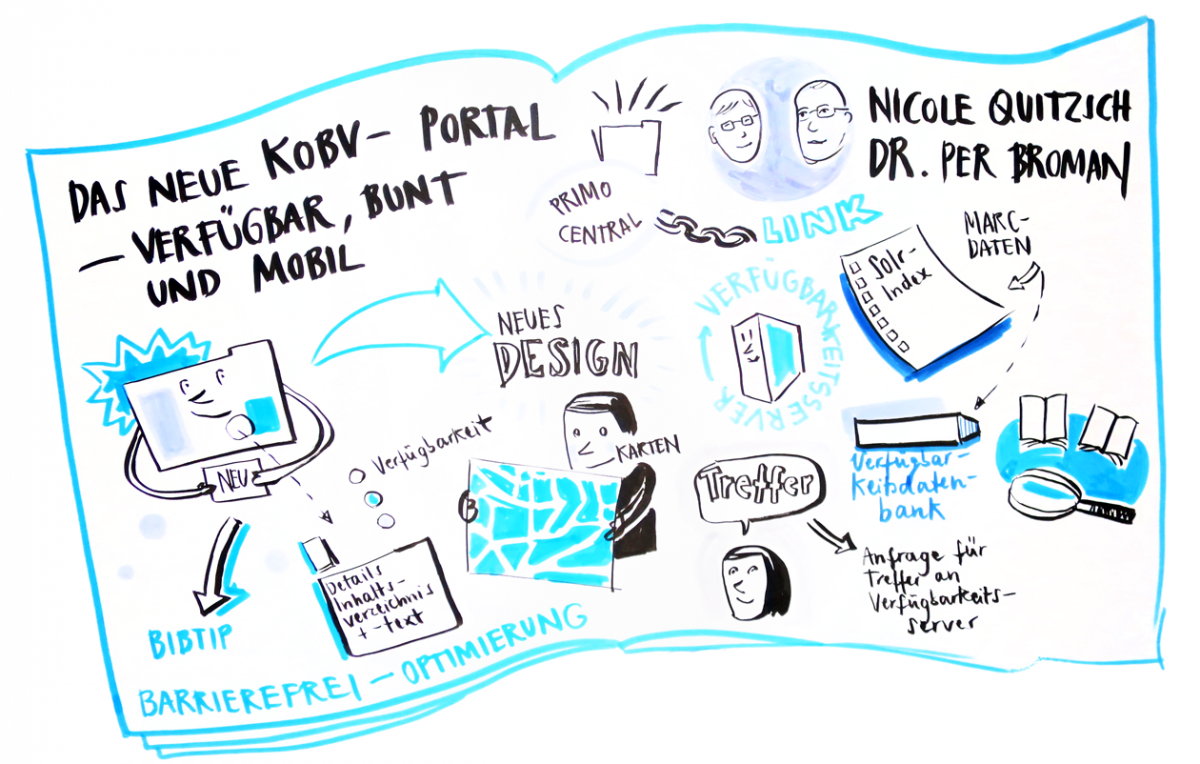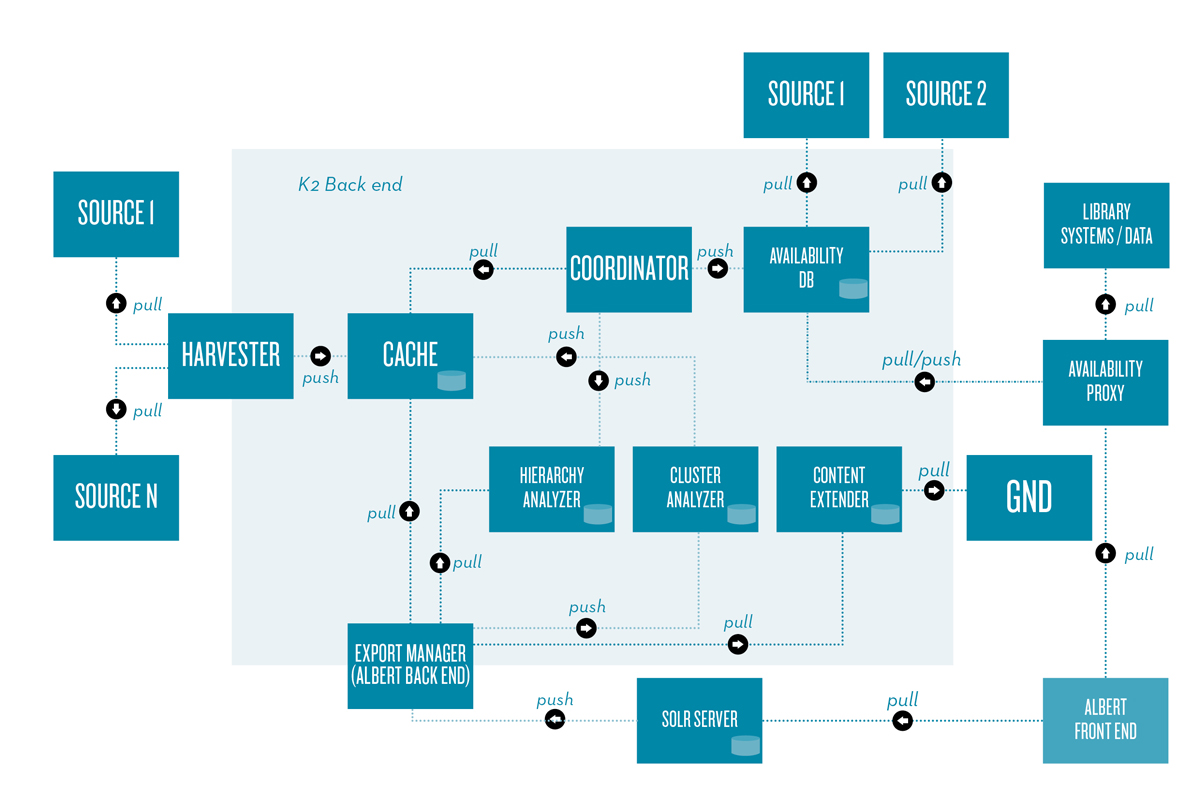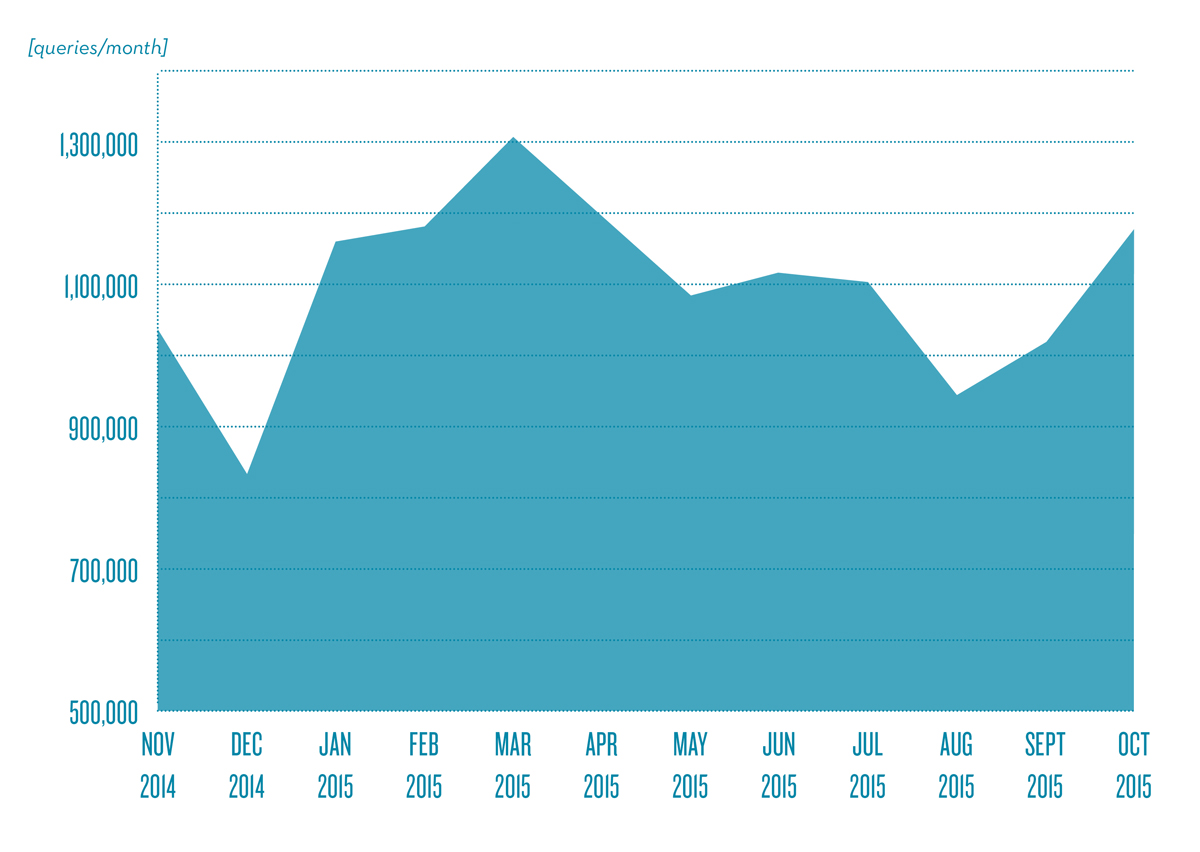Since the foundation of the KOBV (Cooperative Library Network Berlin-Brandenburg), the KOBV Portal has been one of the most important services for libraries and library users in the region and beyond. The research portal makes it possible to search 60 library catalogs in Berlin and Brandenburg simultaneously. The year 2015 represents a milestone in the further development of the portal. With the completion of Project K2, a modern KOBV Portal with a completely new face and new features has come to life.
KOBV Portal - from Project to Service

Abstract: The Cooperative Library Network Berlin-Brandenburg (KOBV) – located at ZIB since 1996 – benefits from the excellent technical infrastructure at Zuse Institute, which is paramount for the development of innovative information services for its customers. Since the foundation of the Library Network, the KOBV Portal has been one of the most important services for libraries and library users in the region and beyond. The research portal makes it possible to search 60 library catalogs in Berlin and Brandenburg simultaneously. About one million individual queries per month speak for themselves. The year 2015 represents a milestone in the further development of the portal. With the completion of Project K2, a modern KOBV Portal with a completely new face and new features has come to life.
Those who do not only want to know which books and journal articles there are on a certain subject, but also where to get them without having to pull out their wallet, greatly appreciate being able to search library catalogs. The purpose of the KOBV Portal is to avoid having to sift through dozens of catalogs. Here, it is possible to search the library holdings of all university libraries, public libraries, and nearly 30 research and special libraries in the German federal states of Berlin and Brandenburg. These range from popular institutions to the small libraries of the Landesgeschichtliche Vereinigung der Mark Brandenburg, the Leibniz Centre for Agricultural Landscape Research, or the Haus der Wannseekonferenz, to name but a few. Unexperienced portal users frequently do not have the slightest notion that these precious collections exist. A search in the KOBV Portal regularly results in eye-opening experiences (we know this from surveys), when previously unknown collections of small libraries are discovered – in the true sense of the word – and surprising results are found.
In 2015, another milestone in the history of the KOBV Portal was achieved. We were able to complete the entire redevelopment following a two-year project period – “Project K2.” At the end of the year, the redevelopment, supported by the European Regional Development Fund (EFRE) of the Federal State of Berlin, was handed over to the KOBV operation (and, we are proud to say, in a well-documented way). In the future, the new KOBV Portal will be primarily geared toward mobile users in order to account for the worldwide trend toward permanent availability and the change in search habits.

New and Enhanced Features of the KOBV Portal
Besides a completely renewed design, the search experience and search performance in particular have been placed on a new footing by means of the ALBERT discovery software, which was developed in-house. In terms of functionality and usability, the portal has been comprehensively modernized in order to make the search experience more intuitive for the user (e.g. fewer clicks, clearer structure, personalized services). Furthermore, paramount to the success of the service, the search has become much quicker. Technically, an even better in-depth search of the collections of even the smallest libraries has been realized, and, for the first time, it is possible to also capture their unprinted (“born digital”) materials. Now, several hundred million journal articles and other digital media, which have been licensed by different institutions, can be searched. Those looking for a particular book, however, should not be overwhelmed by millions of hits in the search results. Therefore, the search for journal articles is offered in a second menu tab that can be clicked separately.
Homepage of KOBV Portal (http://portal.kobv.de/).
Faceted navigation using formal categories such as medium type, holding library, date of publication, or language helps users hone in on specific items of interest. For the first time, the search results also show whether a work can be borrowed in the relevant libraries at that particular moment or whether it may only be viewed in the reading room. This real-time item availability feature is intended to encourage users to visit the holding library, not least in order to reduce the number of unnecessary interlibrary loans. By means of an internal link to the KOBV Bibliothekenführer, users can see the location of the holding library and the opening hours on an Open Street Map. In addition, for a lot of works, recommendations for related titles are displayed. This is done via a recommender function incorporating the widely used tool “BibTip.” It seems that more relevant works are recommended compared to recommender systems known from sales platforms on the Internet (“customers who bought this item also bought …”). Recommendations are based on statistical analyses of user behavior in various libraries. And, last but not least, we have invested in the improvement of Web accessibility pursuant to the W3C Web Content Accessibility Guidelines. Particularly in the field of (color) contrasts and the independent selection of font sizes, there was room for optimization. Web accessibility has been realized in detail by Webrunners GmbH in a separate development order dedicated entirely to this purpose.
Search filters to narrow down search results.
Representation of real-time item availability. Availability status is displayed using a traffic light metaphor.
For libraries, it is attractive to make their collections searchable in the KOBV Portal because, in this way, the collections become more visible to potential users. Since the beginning of the project phase in 2013, libraries’ interest in becoming part of the portal has been consistently high – and by no means only KOBV member libraries. In the future, the KOBV Portal will continue to be open for experiments. It stands for agility and grows with the requirements of its users.
A Look Back on the Project Phase 2013-2015
For the result to meet expectations, decisions about responsibilities had to first be made at the beginning of the project. In the Operation and Development project teams, more than ten librarians and developers were temporarily involved and cooperated very closely. For the search interface with integrated data management components, the required individual components were defined first and software decisions were made. Conceptually, the entire IT architecture consists of two more or less detached parts:
- Import, processing, and indexing to title sets; and
- Import and caching of item details and availability data.

Back-end architecture of KOBV Portal.
This is complemented by the Web applications for data retrieval: on the one hand, ALBERT as a front end for the search interface; on the other hand, the internally redeveloped “availability proxy”. Parallel to software engineering tasks, librarians’ expertise was a decisive factor in the implementation of the KOBV Portal. The initial project phase was characterized by considerable comparative evaluation (e.g. feature comparison, informal user testing) of library catalogs and similar discovery systems worldwide. All desirable functionalities of the discovery interface were formulated in the form of use cases and by means of a requirements specification, and the design was developed in the form of wireframes as well as mock-ups.
Exemplary mock-up of the search interface.
Initial KOBV Portal wireframe
In addition, an expert library group with participants from KOBV libraries was established as project support. Already in the conceptual phase, users were actively included in the development process, and a co-design approach was taken. In this context, “users” refers to Humboldt University: the Berlin School of Library and Information Science of the Humboldt University conducted project-related user studies within the scope of two seminars. In this way, advances in development were continuously evaluated by users, e.g. by means of think-aloud protocols – captured with screen-cast software. In combination with task-based assessment, think-aloud techniques allow a better understanding of the choices made by test users. Testers were asked to participate in the assessment by explaining how they conducted their searches in the KOBV Portal and expressing whether they were satisfied with the search experience and search results. The overall evaluation of the KOBV Portal was consistently positive. The external testers, who were not familiar with the KOBV Portal before, intend to use it for their professional and private searches in the future because they are enthusiastic about the functions and scope of the portal. To the end of the project phase, monitoring of system uptime and performance of the back-end infrastructure was implemented using Pingdom. To monitor and report website usage, KOBV employs the Web analytics software Piwik.
The project had a sustained positive impact on the internal organization structure of the KOBV. Due to the EFRE Project, the development team of the KOBV has been strengthened in terms of staffing and concept and, at the same time, closely linked to the operational area in a matrix structure, which is reflected in ZIB’s organization by the research groups KOBV – Research & Development and KOBV – Operating.
Outlook – Where Does the Journey Go?
Even prior to the end of the project, it became clear that the new KOBV Portal is very popular among users. About one million individual queries per month speak for themselves. Anyone in Berlin or Brandenburg searching for books, journals, videos, CDs, sheet music, etc. not only searches the OPAC of the local library, but of the entire region with the help of the KOBV Portal. The success can also be confirmed by internal measures. We had defined four quantifiable indicators for which the objective figures have been achieved successfully. We were able to reduce the previous average time until the display of search results from 15 seconds to about one second. The number of clicks until the display of the loan status has dropped from the initial four to five, to two. The proportion of searches resulting in zero hits has fallen from 17.5% to less than 10%, and the share of searches canceled by the user is now under 2% compared to 7.6% in the old version of the KOBV Portal. The KOBV Portal is a core service of KOBV and, as such, will be continually expanded and further developed. We intend to present new releases with minor design modifications, new availabilities, and new library collections every three months, on average. One aim is to display Judaica collections by way of an independent facet. Upon request of KOBV libraries in Brandenburg, we will potentially provide an individual search entry (library facet) for their own collections as a default setting.

Access statistics (unique queries per month).
The entire region profits from the new and further development of the KOBV Portal due to the modern, clearly structured bundling of all regional library resources, since hitherto unrecognized potential for regional, but also national and international efficient use of available media have been opened up. With the modern infrastructure, it is now possible to make the cultural heritage of Berlin and Brandenburg better and easier to find and thus strengthen it sustainably.

